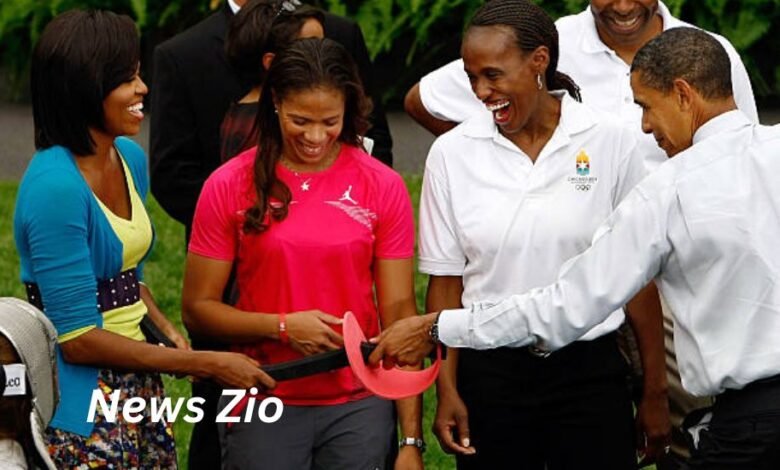Michelle Obama Pregnant: The Truth, the Rumors, and Her Real Story

For more than a decade, Michelle Obama has remained one of the most admired public figures in America and beyond. As First Lady from 2009 to 2017, she championed education, health, and military families while maintaining an image of grace, strength, and resilience. Yet, like many women in the public eye, her personal life has been subjected to scrutiny and speculation—particularly surrounding pregnancy, fertility, and motherhood.
The phrase “Michelle Obama pregnant” has trended at various times, not always for the right reasons. While some searches arise from genuine curiosity about her journey to motherhood, others stem from conspiracy theories and misinformation. To write responsibly about this subject, it’s important to separate fact from rumor and provide a clear narrative of what actually happened.
Michelle Obama’s Personal Account of Pregnancy and Miscarriage
In 2018, with the release of her best-selling memoir Becoming, Michelle Obama opened up publicly about a deeply personal chapter of her life: miscarriage and fertility treatment. She revealed that before having her daughters, Malia and Sasha, she experienced the heartbreak of miscarriage—a pain she described as “devastating.”
Michelle explained that she and Barack Obama ultimately turned to in vitro fertilization (IVF) to conceive both children. In interviews promoting her book, she emphasized how little women often talk about miscarriage, despite how common it is. By sharing her experience, she hoped to break the stigma and remind women they are not alone.
Her candidness about miscarriage and IVF marked one of the first times an American First Lady had spoken so openly about fertility struggles. For many, it was both comforting and revolutionary: a sign that even women in the highest positions of visibility face the same intimate challenges as millions of others.
The Role of IVF in Her Journey
IVF—assisted reproductive technology that helps couples conceive—became central to Michelle’s pregnancy journey. As she explained in Becoming, she was in her mid-thirties when she and Barack began trying to start a family, a time when fertility naturally begins to decline.
She underwent hormone treatments and described giving herself daily injections while Barack was serving in the Illinois state legislature. The couple’s determination paid off: Malia was born in 1998, followed by Sasha in 2001.
Michelle’s willingness to discuss IVF publicly helped destigmatize the procedure. It also opened up new conversations about reproductive health, fertility education, and the need for women to prioritize understanding their bodies.
Rumors, Conspiracies, and “Pregnancy Photo” Hoaxes
Unfortunately, Michelle Obama’s honesty has not stopped false claims and bizarre conspiracy theories from spreading. Over the years, social media platforms and fringe blogs have recycled the narrative that she was “never pregnant.”
Some versions of the rumor falsely suggest she is transgender, and therefore incapable of pregnancy. Others circulate doctored or mislabeled photos claiming to be “proof” of Michelle’s pregnancies—or, conversely, proof that she never carried children.
Major fact-checkers including Snopes, PolitiFact, and Reuters have debunked these claims repeatedly. Investigations into so-called “new pregnancy photos” have traced them to unrelated images or deliberate fabrications. These debunks emphasize that the rumors are baseless and often motivated by political hostility rather than truth.

Why Do These Rumors Persist?
The persistence of rumors about Michelle Obama’s pregnancy status is part of a larger pattern in American politics: powerful women of color are often subjected to misinformation campaigns designed to undermine their credibility.
During Barack Obama’s presidency, the “birther” conspiracy questioned his U.S. citizenship, despite clear evidence to the contrary. Similarly, attacks on Michelle’s gender, femininity, and motherhood have served as tools of political distraction.
Rumors thrive because they blend sensationalism with imagery. A single misleading photo—stripped of context—can circulate faster than a carefully written fact-check. Combined with echo chambers on social media, falsehoods gain traction and are repeated until they appear convincing to some audiences.
The Importance of Michelle Obama’s Story
By sharing her truth, Michelle Obama countered these narratives with vulnerability and strength. Her openness about miscarriage was not simply a personal revelation; it was a cultural turning point.
Millions of women have quietly suffered the grief of miscarriage without ever speaking about it. Michelle’s admission made the topic part of mainstream conversation. She normalized IVF, not as something shameful or secretive, but as a practical medical option.
In doing so, she turned personal pain into a public act of solidarity—transforming “Michelle Obama pregnant” from a rumor-fueled phrase into a symbol of honesty about fertility.
Media Coverage: Fact vs. Sensation
Media outlets have played a dual role in shaping how “Michelle Obama pregnant” stories circulate. On one hand, respected organizations like CBS, PBS, and ABC highlighted her IVF journey with sensitivity, reporting her own words and framing them in broader conversations about women’s health.
On the other hand, tabloids and clickbait blogs have seized on the same keyword for traffic, amplifying hoaxes and conspiracy theories. This split demonstrates the challenge of modern media: responsible journalism competes with viral misinformation.
For readers, the key takeaway is simple—sources matter. Verified interviews and memoir excerpts should carry more weight than anonymous blog posts or manipulated images.
What the Science Says About Miscarriage and Fertility
To fully understand Michelle Obama’s story, it helps to consider the science. Miscarriage occurs in 10–20% of known pregnancies, though the real number is likely higher because many occur before a woman realizes she is pregnant.
Age is a key factor in fertility. By the mid-thirties, egg quality declines significantly, and the risk of miscarriage increases. IVF offers a chance for many women to overcome these challenges, though it can be emotionally and financially demanding.
Michelle’s decision to share this context highlights not only her personal experience but also the systemic gaps in how society supports women’s reproductive health.
The Broader Conversation: Women, Power, and Privacy
At its core, the obsession with whether Michelle Obama was “really pregnant” reflects society’s fixation on women’s bodies—especially when those women hold power. Public figures are often denied privacy, but the scrutiny of Michelle’s body crossed into invasive speculation.
Her story sparks bigger questions: Why do we demand proof of women’s pregnancies? Why do conspiracy theories about gender and fertility spread so easily? And how can media consumers learn to separate credible information from misinformation?
By answering these questions, we can begin to dismantle the cultural forces that allow such rumors to thrive.
Conclusion: Truth Over Rumor
Michelle Obama’s pregnancy journey is no longer a mystery. She has spoken openly about her miscarriage, IVF treatments, and motherhood. Her daughters, Malia and Sasha, are living proof of her story.
The rumors that persist online tell us more about the culture of disinformation than they do about Michelle herself. By focusing on her verified account, we honor her decision to share her truth and highlight the resilience that defines her life.
As readers and writers, we carry a responsibility: to amplify facts, not falsehoods. And as Michelle Obama’s example shows, vulnerability can be an act of power—turning personal struggles into collective understanding.
For more articles that dive into truth behind trending topics, you can follow updates on News Zio.



